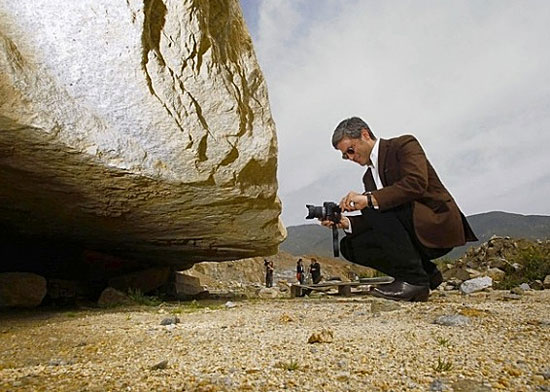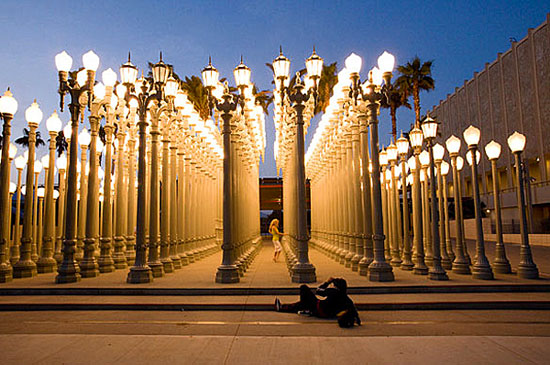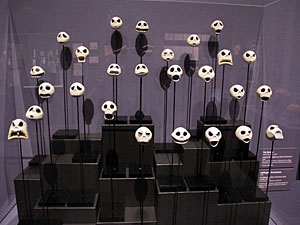Rocking a crowd at LACMA
June 20, 2012
As Michael Heizer’s “Levitated Mass” prepares for its big reveal this weekend, the Los Angeles County Museum of Art has been scrambling. The grass keeps wearing out. The parking garages keep filling.
“We’ve had to do extra maintenance,” says LACMA Director Michael Govan, “because of all the people hanging out on the grounds, picnicking.”
Make no mistake, Govan is not complaining. In fact, he says, he would celebrate if he weren’t so busy because for the first time in six years, museum attendance broke the 1 million mark this fiscal year, soaring to an estimated 1.3 million visitors.
LACMA’s attendance as the fiscal year approaches its June 30 finish is still a far cry from that of such institutions as The Louvre and the Metropolitan Museum of Art in New York, where the crowds exceeded 9 million and 6 million, respectively. Locally, it’s still less than half the turnout that the Dodgers get in a season (although it’s twice this year’s Lakers attendance).
Still, only 51 museums in the world broke the 1 million mark last year, according to The Art Newspaper, a cultural publication that does an annual attendance survey. “It’s a rarefied zone,” Govan notes.
More importantly, this year’s crowds didn’t just stem from the fleeting boost of a single, blockbuster exhibition. Rather, they built from a steady stream of smart, high profile shows in new permanent spaces such as the Resnick Pavilion and the Broad Contemporary Art Museum. (Click here for a 10-year look at LACMA attendance.)
“LACMA has broken a million before, with shows like the [1999] Van Gogh exhibition and ‘Tutankhamun Returns’ [in 2005],” notes Govan. “But those shows were one-time occurrences, and different in the sense that after they left, the attendance went right back to where it was.”
That default attendance when Govan arrived in 2006 from New York’s Dia Art Foundation was between 600,000 and 650,000. Two years after he took the helm, however, the Broad Contemporary opened, as did Chris Burden’s now-iconic entry piece, “Urban Light.” Attendance shot up by more than 200,000, maintaining its new base even as the Resnick Pavilion was planned and constructed. In 2010, when the Resnick opened, the figures rose by another 100,000.
Since then, the upward trajectory has continued. During the last 12 months, visitors have flocked not only to works by popular artist and director Tim Burton, but also to less mainstream shows such LACMA’s exhibition on California design.
The surrealist show, “In Wonderland”, was a big draw in recent months, and Burden’s room-sized miniature freeway, “Metropolis II”, has had more than 200,000 visitors alone since it opened in January.
And, Govan adds, visitors are sticking around.
“One of the things I’m especially proud of is that the average stay six years ago was 45 minutes, and now it’s two hours and 45 minutes,” he says. “So when you multiply that by the attendance, the use of the museum has increased extraordinarily.”
Attendance, of course, isn’t everything. “There’s the quality of the program,” Govan says. “There’s how you change art history. There’s the idea of showing Los Angeles artists who had distinguished careers and deserve more recognition. That’s part of our role, too.”
Challenges also persist—among them the difficulty of attracting tourists. Despite Los Angeles’ buzz as a dynamic arts center, out-of-towners are so often overwhelmed by the sprawl that they give up on the parks, cathedrals and museums that would be natural tourist destinations in other big cities.
The Tim Burton show—mobbed by 5,200 visitors a day when it debuted at New York’s Museum of Modern Art—only got about 2,700 visitors a day when it moved to LACMA. And art museums in Chicago, Boston and even San Francisco routinely outdo our attendance figures.
Govan says some of the difference is logistical: San Francisco’s renovated de Young Museum, for instance, sits next door to a wildly popular science museum. But a big part of it, Govan says, is tourist traffic.
“When I got here only 11% of our audience was a tourist audience—by far the lowest number of any museum of our kind in the world. Usually, you get a 50-50 mix, or at least 60-40.”
LACMA’s tourist component has risen since to about 21% of attendance, he says, and should continue to improve. A planned subway stop at the museum should help, as should the eventual addition next door of a big, new movie museum being jointly developed by the Academy of Motion Picture Arts and Sciences and LACMA.
“But you’ll never see the giant numbers until L.A.’s tourism numbers rise,” Govan says.
In the meantime, Govan expects the museum’s solid, incremental gains to continue, and not only with must-see installations such as “Levitated Mass,” which opens Sunday at 11 a.m.
Visitors on that day will not only be able to finally experience “The Rock,” but also check out the many other delights at LACMA—the “Urban Light” forest of street lamps, the tiny whizzing cars of “Metropolis II,” the rare and beautiful Latin American codices and treasures at “Children of the Plumed Serpent: The Legacy of Quetzalcoatl in Ancient Mexico,” which is part of Govan’s mission to take L.A.’s understanding of Latin American art to the next level. (“Everybody knows about ancient Egypt,” says Govan, “and not enough people know about ancient Mexico.”)
Next year’s docket will include a retrospective on the work of L.A. sculptor Ken Price that will go to the Met in New York after it leaves here and a show built around eight of Caravaggio’s sumptuous, crowd-pleasing paintings.
The goal, Govan says, is to get to 1.8 million visitors by the end of this decade.
But, he adds, “What I’m after is not one thing that’s everything. It’s a collection of things that create critical mass—the friendly entrance, the outdoor space, the restaurant and bar, the jazz and film programs.”
As for the beleaguered grass, he laughs: “These are good problems to have.”

LACMA chief Michael Govan with The Rock at its earlier home in Riverside County. Photo/Los Angeles Times
Posted 6/21/12














 405 bridge work causes a stink
405 bridge work causes a stink





